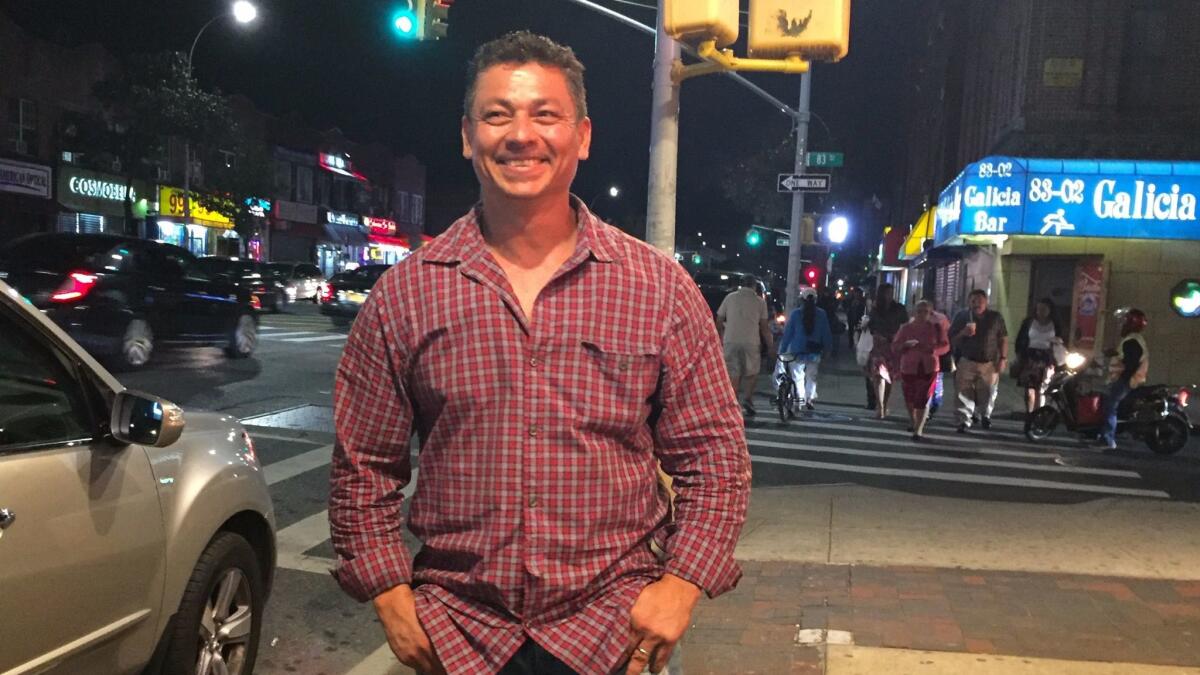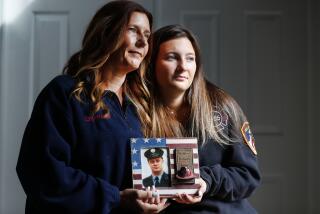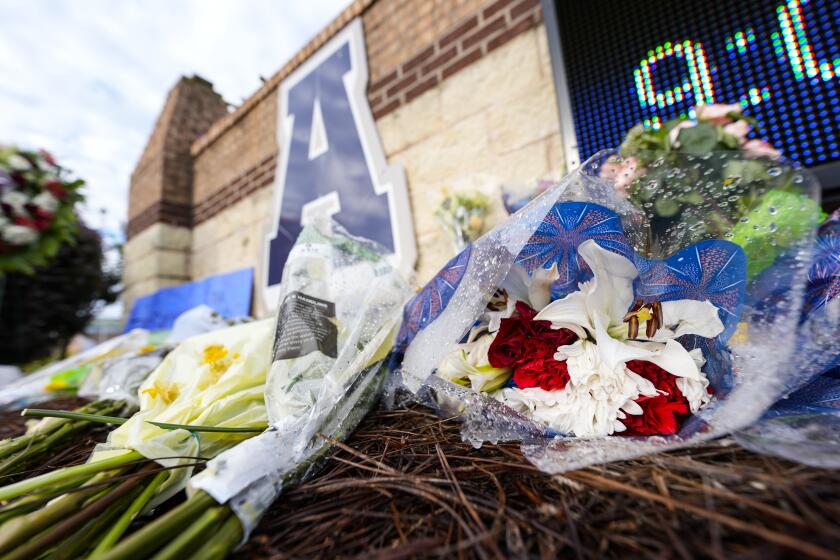They helped clean up the wreckage of 9/11. Now they face the threat of deportation

Reporting from New York â Within days of the terrorist attack that destroyed the World Trade Center, word spread in the immigrant neighborhoods of New York that workers were desperately needed to aid in the cleanup. The job would pay cash, about $10 an hour â no questions asked about Society Security cards or immigration status.
Then 32, Carlos Cardona had watched with horror from a construction site across the river in Brooklyn. Although his construction job paid a little better, he felt he ought to pitch in to help the country where heâd lived since his teens, having moved illegally from Colombia. He was married to a U.S. citizen and raising a 2-year-old daughter.
âThe money wasnât very good. But I felt I had to be there to do what I could,ââ Cardona said. âIt was an emergency. We had to serve.â
Today he suffers from respiratory and digestive disorders, known as âWorld Trade Center syndrome,â that have left him unable to climb a flight of stairs and dependent for his medical care on clinics set up for 9/11 responders.
He also faces a predicament shared by up to 2,000 immigrants who helped to clean up after Sept. 11, 2001: the threat of deportation.
After more than three decades in the United States, Cardona was detained Feb. 28 after showing up for one of his regularly scheduled check-ins with the Immigration and Customs Enforcement office in New York. Days earlier, the Trump administration had issued a memorandum prioritizing the removal of immigrants in the U.S. illegally with criminal records.
âThey told me there is a new president and the law has changed,ââ Cardona said. He had plead guilty to a nonviolent drug offense in 1990 and served 28 days in jail â which later hurt his ability to legalize his status despite being married to a U.S. citizen.
He was transferred to an immigrant detention center in Kearny, N.J., and then to a facility in Louisiana. His deportation was averted in June only through the intervention of his congressman, Joseph Crowley, and the New York governor, Andrew Cuomo, who issued Cardona a hasty pardon for the drug offense.
He returned to New York after his release but remains vulnerable to deportation.
In July, Crowley, a Democrat, announced a bill that would put 9/11 responders and cleanup workers on a fast track to legalize their status in the United States. His office estimates that 1,000 to 2,000 immigrants would be covered, many of them like Cardona suffering from illnesses thought to be related to their work.
âOur nation has long recognized and offered similar appreciation for those who served the United States in times of need, whether in our armed forces, as overseas translators, or as witnesses assisting law enforcement agencies,ââ Crowleyâs office said in a statement.
Camille Mackler, director of immigration legal policy at the New York Immigration Coalition, described the work of the immigrants after 9/11 as a dramatic example of the contributions people in the country illegally often make.
âIt was a day when we were all New Yorkers and where you started out didnât matter,â she said. âAt a minimum these people should be allowed to remain.ââ
The cleanup was the kind of work that stereotypically falls to immigrants â difficult, dirty and dangerous.
âCleaning asbestos was work nobody wanted to do so it was left to the immigrant workforce, mostly workers from Latin America and Poland,ââ said Edison Severino, business manager for the Laborersâ Union, Local 78, which represents asbestos, lead and hazardous waste workers.
The âpile,â as the wreckage of the World Trade Center was quickly nicknamed, contained tons of jagged steel and burning debris, and was surrounded by a toxic cloud of pulverized cement, glass fibers, asbestos, silica, benzene from the jet fuel and lead.
Pressure was intense from the White House to City Hall to clean up as quickly as possible, to clear away what remained of the World Trade Center and to get vital buildings nearby, such as the New York Stock exchange, back to normal.
âBy the third day after the attacks, we had these bucket brigades set up bringing out debris... Business agents were all asking for environmental cleanup workers, and there was no request for documents or paperwork,â Severino said. âPeople were working double and triple shifts, sleeping for a few hours at a church, then going back to work.â
In an interview at a Colombian restaurant in the Queens borough where he lives, Cardona recalled that he worked with Mexicans, Ecuadorians, Peruvians, while other crews had workers from Jamaica, the West Indies and Eastern Europe.
âYou had the whole world working down there,ââ he said.
While police and firefighters, and most of the union members wore protective gear, he and his coworkers had been hired by small, nonunionized contractors and were given only paper masks. âIt was a crazy time,â Cardona said. âWe werenât paying attention.ââ
At the time, he was a fit young man. But within a few years, he noticed that he was often wheezing and out of breath. The symptoms got steadily worse until he woke up one night in 2006 feeling that he was unable to breathe.
He was soon diagnosed with asthma and emphysema. Digestive disorders and cancers have also been linked to the Sept. 11 attacks.
âThe way everything was pulverized into such very small particles â we have nothing in history to compare this with except maybe the atomic explosions in Japan,ââ said Jim Melius, an occupational physician and epidemiologist who serves on the board of 9/11 Health Watch.
In 2011, the World Trade Center Health Program was set up to provide monitoring and healthcare to people affected by 9/11. More than 67,000 workers and 12,000 survivors of the attacks have been certified as eligible.
Although the workers are not required to provide Social Security numbers or prove they have legal status, they have to prove their connection to Sept. 11 â something that is not always possible for people paid off the books in cash. And all the hospitals and clinics participating in the program are in the United States.
Cardona has no complaints about the healthcare he gets from the federal government. He receives seven medications, including two inhalers, for free but worried how he would receive care if he were deported.
âThere are so many others like me. Many have already been deported,â he said. âThey might be sick and we have no way to help them.â
Twitter: @BarbaraDemick
More to Read
Sign up for Essential California
The most important California stories and recommendations in your inbox every morning.
You may occasionally receive promotional content from the Los Angeles Times.










